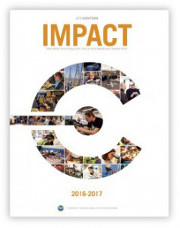
ATE PI Conference – October 23-25, 2017 – Washington D.C.
www.aacc.nche.edu/Resources/aaccprograms/ate/conf2017/Pages/default.aspx
The American Association of Community Colleges, with the support of the National Science Foundation, will hold the 24th National ATE Principal Investigators Conference at the Omni Shoreham Hotel in Washington, DC. The conference will bring together approximately 850 people to focus on the critical issues related to advanced technological education. Key people working on ATE projects across the country will participate in the conference. Attendees represent community colleges, business and industry, secondary school systems, and four-year colleges covering projects in a wide variety of areas such as: information technology, engineering technology, micro- and nanotechnologies, chemical technology, biotechnology, and others.
Download the Conference App – you can find information on the ATE Central PI Meeting page once the app is available in early October, and make sure to stop by the ATE Central Booth during all three showcase sessions!








